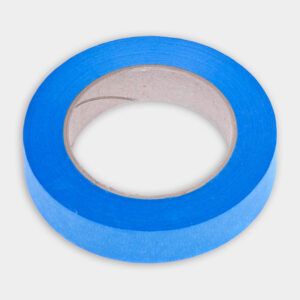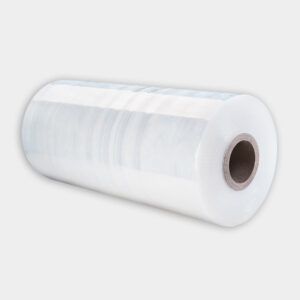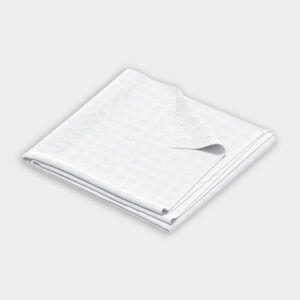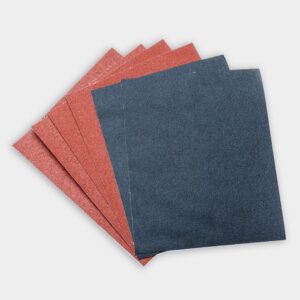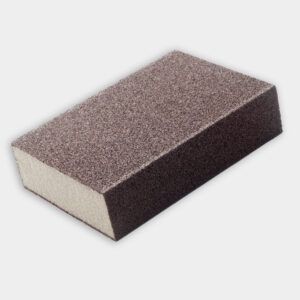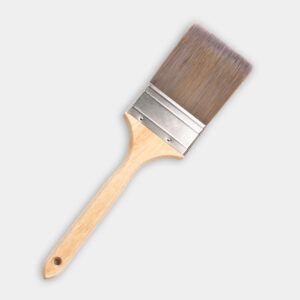We may be compensated if you purchase through links on our website. Our team is committed to delivering honest, objective, and independent reviews on home products and services.
Project details
Skill
Cost
Estimated Time
Refinishing deck railings can breathe new life into your outdoor space, enhancing both its appearance and functionality. This process not only improves the aesthetic appeal of your deck but also protects the wood from weathering and damage and protects your fingers from splinters.
Paint expert Mauro Henrique demonstrates the process, offering valuable insights for homeowners looking to tackle this project. In this guide, we’ll walk you through the steps to refinish your deck railings, ensuring a beautiful and long-lasting result.
* Unless otherwise noted, costs in this article reflect an average of prices that our team found from hardware stores like Lowes and Home Depot, and on Amazon.com.
Choosing the Right Stain for Your Deck Railings
Selecting the appropriate stain is essential for achieving the desired look and protection for your deck railings. As Henrique illustrates in the video, there are three main types of stains to consider, each offering unique benefits.
Transparent Penetrating Oil
Transparent penetrating oil stains offer a natural look that enhances the wood’s grain and color. These stains typically last for two to three years before requiring refinishing. They’re an excellent choice for showcasing beautiful wood like mahogany.
Semi-Transparent Stains
Semi-transparent stains provide a bit more color while still allowing some of the wood grain to show through. These stains usually last three to four years before needing to be reapplied.
Solid Stains
Solid stains offer the most coverage and color, similar to paint. They’re ideal for hiding imperfections or matching repairs. Solid stains typically last about five years before requiring refinishing.
When choosing a stain, consider factors such as the type of wood, the current condition of your railings, and your desired aesthetic. Keep in mind that while all these stains offer equal protection, their lifespans vary.
Preparing Your Deck Railings for Refinishing
As Henrique points out, 85% of a professional-looking paint job is preparation. Follow these steps to ensure your deck railings are ready for staining.
Inspecting for Damage
Before beginning the refinishing process, carefully inspect your deck railings for any signs of rot or damage. Use a painter’s tool or screwdriver to lightly tap the joints where rails and posts meet, as well as where posts connect to the deck. If the wood feels soft or the tool sinks in, it may be time to replace the affected parts.
Protecting Surrounding Areas
Make sure you have enough painter’s tape and plastic sheeting to cover anything you don’t want to paint or stain. Henrique recommends green painter’s tape, which is thicker and tackier than the typical blue tape, for exterior projects. To prevent staining unwanted areas, take the following precautions.
- Use painter’s tape to cover any metal hardware, cable railings, or decorative brackets.
- Wrap plastic sheeting around taped areas for added protection.
- Apply tape to the decking boards around each post.
- Cover the entire decking surface with drop cloths to catch any drips.
Sanding the Railings
Sanding is necessary for achieving a smooth surface and ensuring proper stain adhesion. Avoiding damage to the wood is paramount, as scratches or gouges can lead to uneven staining.
- Put on eye protection and a dust mask to prevent inhaling sawdust.
- Use a random orbital sander with 150-grit sandpaper for flat surfaces.
- For intricate profiles and post caps, use a 100-grit sanding sponge.
- Sand in the direction of the wood grain to avoid damaging the surface.
- Continue sanding until you’ve removed the old stain and reached fresh wood.
Filling Holes and Damaged Areas
After sanding, address any small holes or damaged areas.
- Mix wood filler with sanding dust from your project.
- Use a painter’s tool to apply the mixture to holes and damaged spots.
- Allow the filler to dry completely.
- Sand the filled areas smooth, blending them with the surrounding wood.
By incorporating sanding dust into the filler, you achieve a more seamless blend with the wood. This technique is particularly effective for maintaining a consistent appearance across all surfaces.
Applying the Stain To a Deck Railing
With preparation complete, you’re ready to apply the new stain to your deck railings.
Tools and Timing
For best results, use a 2.5-inch angled paintbrush to apply the stain. Avoid using rollers, as they don’t work well for this type of surface, and the stain is too thin for a paint sprayer.
Additionally, the wood should be completely dry when you apply the stain, so wait for a time when there has been no rain for 48 hours. Note that you’ll also need to have 48 hours of drying time, so this essentially means a four-day window free of rain. Alternatively, you can set up tarps if your space allows.
Application Technique
Follow these steps to apply the stain effectively:
- Stir the stain thoroughly and pour it into a paint bucket or cut bucket.
- Dip your brush into the stain and apply it to the wood using light pressure.
- Work in small sections, maintaining a wet edge as you go.
- Apply the stain using back-and-forth strokes, following the wood grain.
- Allow the stain to soak into the wood for about 20 minutes.
- Wipe off any excess stain with a clean rag to ensure an even finish.
Applying the stain in small sections helps prevent hot spots or uneven color. Maintaining a wet edge is crucial to avoid noticeable overlaps, ensuring a consistent and professional look.
Safe Disposal of Flammable Rags
Proper disposal of oil-soaked rags can help prevent spontaneous combustion. Always follow local regulations to ensure safe handling and disposal of hazardous materials, but here are some general guidelines.
- Place oil-soaked rags in a metal paint bucket.
- Fill the bucket with water and secure the lid.
- Contact your local authorities for proper disposal instructions.
Finishing Touches and Maintenance for Your Refinished Deck Railing
After applying the stain, there are a few final steps to complete the project and ensure long-lasting results.
Removing Protection and Cleanup
Once the stain has dried sufficiently:
- Carefully remove all tape, plastic sheeting, and drop cloths.
- Dispose of used materials according to local regulations.
- Clean your brushes and other tools thoroughly.
Drying Time and Usage
Wait at least two days before touching or using the railings. Avoid rain or moisture exposure for at least 48 hours after application. Ensuring adequate drying time ensures that the stain can set properly.
Future Maintenance
To keep your deck railings looking their best:
- Plan to refinish the railings according to the lifespan of your chosen stain type.
- Clean the railings regularly to prevent dirt and debris buildup.
- Inspect the railings annually for signs of wear or damage.
Resources
To check for rot, Mauro used a 5-in-1 painter’s tool from Hyde Tools to tap the bases and corners of the deck railing. To prep the deck railings, Mauro used Green Frog painter’s tape to cover the rail wires. To vacuum up the dust from sanding the railings, Mauro used the Festool CT 15 E HEPA dust extractor.
The penetration oil Mauro used on the deck railing was the Penofin penetration Brazilian rosewood oil finish for hardwood transparent natural finish.
All other tools used, including cut buckets, rags, painter’s plastic, sanding sponges, and 2 1/2 inch synthetic angled flat brush can be found at local home centers.

